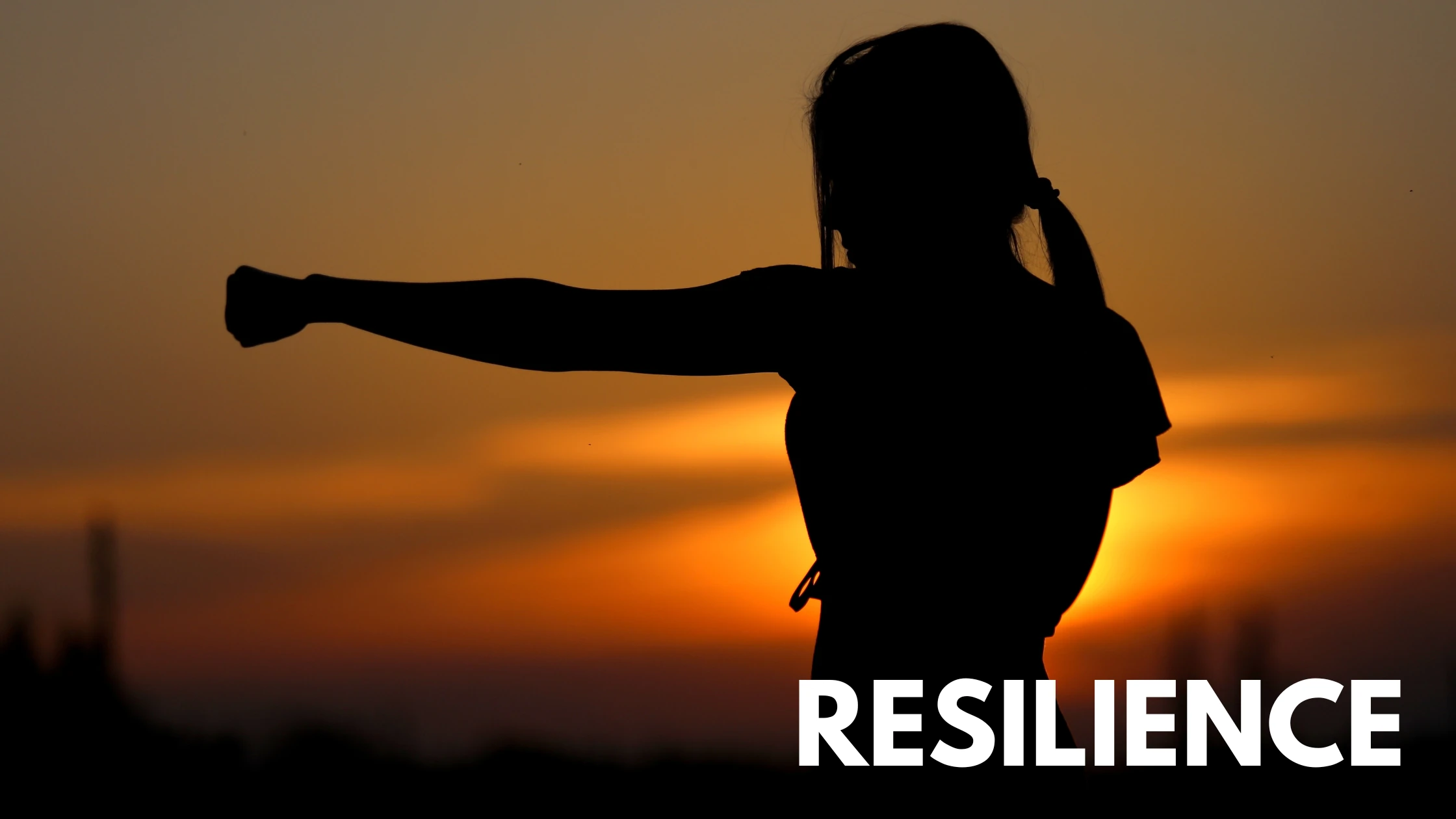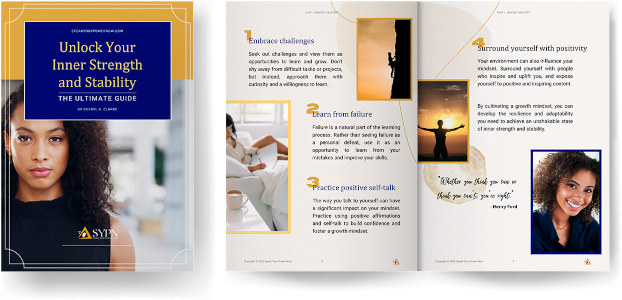In the journey of personal development, the beliefs we hold about ourselves and our abilities play a crucial role. Sometimes, these beliefs, known as limiting beliefs, are remnants of our past experiences that continue to hold us back. Recognizing and overcoming these limiting beliefs can be transformative, leading us toward a more fulfilling life. In this article, we’ll explore how to identify and overcome these beliefs, paving the way for personal growth.
Understanding Limiting Beliefs
Limiting beliefs are negative thought patterns that stem from past experiences and often shape our self-perception and actions. They might arise from childhood experiences, societal influences, or even past failures. These beliefs can hinder progress, diminish self-esteem, and limit our potential. Identifying them is the first step towards breaking free from their constraints.
Recognizing the Signs
1. Self-Doubt Creep: Do you often doubt your capabilities, even when others believe in you
Self-doubt can be a subtle yet persistent companion. It often shows up as a nagging voice questioning your abilities and achievements. Even when others see your potential, you might find yourself undermining your accomplishments. This self-doubt can stem from past experiences where you might have faced criticism or setbacks. It’s essential to recognize these moments of self-doubt, as they could indicate underlying limiting beliefs that need addressing.
2. Negative Self-Talk: Pay attention to the words you tell yourself
Our internal dialogue plays a crucial role in shaping our beliefs. If your self-talk tends to be overly critical, pessimistic, or judgmental, it’s a sign that limiting beliefs might be at play. Negative self-talk can reinforce the idea that you’re not capable, worthy, or deserving of success. Start observing your self-talk patterns and challenging any statements that don’t align with reality or support your growth.
3. Fear of Failure: If fear of failing paralyzes you, it could be linked to a limiting belief
Fear of failure is natural to some extent, but when it becomes overwhelming and prevents you from taking reasonable risks, it’s worth investigating deeper. Limiting beliefs often fuel this fear by making you believe that failure defines your worth or that you’re incapable of bouncing back. Overcoming this fear involves understanding that failure is a stepping stone, not a roadblock, and reframing your perspective on it.
4. Comparison Trap: Comparing yourself to others indicates underlying beliefs of inadequacy
Comparing yourself to others can lead to a distorted self-perception. If you find yourself constantly measuring your worth based on others’ achievements, it might indicate a belief that you’re not good enough as you are. Remember that everyone’s journey is unique, and focusing on your growth and progress is more valuable than external comparisons.
5. Avoiding Risks: A strong aversion to risks might stem from fear-based beliefs
When you avoid stepping out of your comfort zone or trying new things, it could be due to underlying beliefs that you’re not capable of handling challenges or uncertainty. Risk aversion might hold you back from opportunities for growth and learning. It’s essential to differentiate between calculated risks and reckless behavior. Embracing calculated risks can lead to remarkable personal development.
By understanding these signs and their underlying causes, you can begin the process of uncovering and addressing your limiting beliefs. Remember that self-awareness is the first step toward personal growth and transformation.
Challenging Limiting Beliefs
1. Self-Reflection: Take time to introspect. Identify beliefs that might be holding you back
Self-reflection is a powerful tool for uncovering hidden beliefs that may be affecting your thoughts and actions. Set aside dedicated time to sit with your thoughts and emotions. Ask yourself probing questions like, “What beliefs do I hold about myself?”, “When do I feel most limited?”, and “What events triggered these feelings?” Dig deep and be honest with yourself to identify the core beliefs that are hindering your progress.
2. Gather Evidence: Challenge your beliefs with concrete evidence of your accomplishments
Limiting beliefs often lack a solid foundation in reality. Counteract these beliefs by compiling a list of your past achievements and successes. This could include personal milestones, professional accomplishments, or instances where you stepped out of your comfort zone. By documenting your achievements, you create a tangible record that contradicts the negative narratives of your limiting beliefs.
3. Positive Affirmations: Replace negative self-talk with positive affirmations to rewire your thinking
Affirmations are positive statements that help reshape your mindset. Craft affirmations that directly challenge your limiting beliefs. For instance, if you believe you’re not skilled enough for a new endeavor, replace it with an affirmation like, “I am capable of learning and growing in new areas.” Repeat these affirmations daily to gradually shift your thought patterns toward empowerment.
4. Small Steps: Gradually face your fears to prove your limiting beliefs wrong
Overcoming limiting beliefs can be intimidating, so start with small steps. If your belief is that you’re not good at public speaking, begin by speaking up in smaller group settings. Each success, no matter how small, accumulates evidence that contradicts your limiting beliefs. Gradually pushing your boundaries helps build confidence and weaken the grip of these beliefs.
5. Seek Support: Discuss your beliefs with a trusted friend, mentor, or therapist for perspective
External perspectives can provide invaluable insights. Share your limiting beliefs with someone you trust – a friend, family member, mentor, or therapist. They can offer a fresh viewpoint and provide encouragement. A mentor or therapist, in particular, can guide you through structured exercises to challenge your beliefs and offer strategies for overcoming them.
By proactively engaging in these strategies, you’re taking steps to dismantle the power of limiting beliefs and create space for personal growth and self-improvement. Remember that consistency and patience are key as you work to reshape your beliefs and mindset.
Shifting Your Mindset
1. Embrace Failure: Understand that failures are learning experiences, not confirmations of your beliefs
Failure is an inevitable part of life, but it doesn’t define your worth or potential. Embrace failures as opportunities for growth and learning. Each setback offers valuable insights that can lead you toward success. Rather than confirming your limiting beliefs, failures become stepping stones toward refining your skills and strategies.
2. Visualize Success: Imagine yourself succeeding despite your limiting beliefs. Visualization is powerful
Visualization is a technique where you mentally rehearse achieving your goals. Use this practice to vividly imagine yourself succeeding in areas where your limiting beliefs have held you back. Visualize the process, the challenges you overcome, and the triumphant outcome. By repeatedly visualizing success, you rewire your brain to align with positive outcomes.
3. Celebrate Progress: Acknowledge and celebrate each step you take towards overcoming a belief
Celebrate your victories, no matter how small. When you challenge a limiting belief and make progress, give yourself credit. Celebrating reinforces the idea that you’re capable of change and growth. It also counteracts the tendency to focus on perceived failures, reminding you of the progress you’re making on your journey.
4. Practice Self-Compassion: Treat yourself with the kindness you'd offer a friend facing similar challenges
It’s easy to be overly critical of ourselves when confronting limiting beliefs. Practice self-compassion by treating yourself with the same kindness and understanding you’d extend to a friend. Remind yourself that everyone faces challenges and setbacks. Treat your own mistakes with the same empathy you’d offer to others, fostering a nurturing environment for growth.
5. Set Realistic Goals: Break down your goals into achievable steps, boosting your confidence
Break down your larger goals into smaller, achievable steps. Each successful step reinforces your belief in your abilities. Achieving these smaller goals gradually builds your confidence and challenges the underlying beliefs that hinder your progress. This approach creates a positive feedback loop, making it easier to take on larger challenges.
Redefining Your Narrative
1. Create New Beliefs: Intentionally replace limiting beliefs with positive, empowering ones
Challenge the old beliefs that have held you back by intentionally cultivating new, positive beliefs. Identify the specific limiting beliefs you want to overcome and create counter-beliefs that emphasize your strengths and potential. For example, if you believed you were not good enough, replace it with the belief that you are capable of achieving greatness through consistent effort.
2. Focus on Growth: Embrace a growth mindset, understanding that you can evolve beyond your past
Adopting a growth mindset is pivotal. This mindset emphasizes that your abilities and intelligence can be developed through dedication and hard work. Understand that your past doesn’t define your future; you have the capacity to learn, change, and improve continuously. Embrace challenges as opportunities for growth rather than as evidence of your limitations.
3. Write a Letter: Pen a letter to yourself, forgiving past mistakes and embracing a fresh start
Writing a letter to yourself can be a therapeutic exercise. Reflect on your journey, acknowledging past mistakes and forgiving yourself for them. Express gratitude for the lessons learned and outline your intentions for moving forward. This act of self-compassion helps release the grip of old beliefs and invites in a renewed sense of purpose.
4. Surround Yourself: Associate with people who uplift and support your journey to overcome beliefs
Your environment plays a significant role in shaping your beliefs. Surround yourself with individuals who believe in your potential and encourage your growth. Seek out mentors, friends, and communities that align with your goals and values. Positive influences can provide motivation and accountability as you work to redefine your narrative.
5. Mindfulness Practice: Cultivate mindfulness to stay present and counter negative thought patterns
Mindfulness involves being fully present in the moment and observing your thoughts without judgment. This practice enables you to recognize negative thought patterns as they arise and consciously choose not to engage with them. Mindfulness helps you detach from limiting beliefs and instead focus on the present moment and your personal growth journey.
By implementing these strategies to redefine your narrative, you’re actively reshaping how you view yourself and your potential. Remember that changing your narrative takes time and consistent effort, but the process is transformative and leads to a more empowered and fulfilling life.
Conclusion
The journey to overcome limiting beliefs from your past is a powerful act of self-discovery and growth. By recognizing these beliefs, challenging them, and shifting your mindset, you can reshape your narrative and unlock your true potential. Remember, the process takes time and patience, but the results are well worth the effort. Embrace the journey, and watch yourself flourish.
Frequently Asked Questions
1. What causes limiting beliefs?
Limiting beliefs can stem from childhood experiences, societal influences, trauma, or past failures.
2. Can limiting beliefs change over time?
Yes, with conscious effort and self-awareness, you can replace limiting beliefs with empowering ones.
3. How do I differentiate between intuition and a limiting belief?
Intuition often feels like a calm, clear knowing, while limiting beliefs come with doubt and negativity.
4. Is professional help necessary to overcome limiting beliefs?
While self-help strategies are valuable, seeking guidance from a therapist or coach can provide deeper insights.
5. Can limiting beliefs resurface after being overcome?
Yes, during challenging times, old beliefs might resurface. The key is to apply the strategies you’ve learned to overcome them again.












